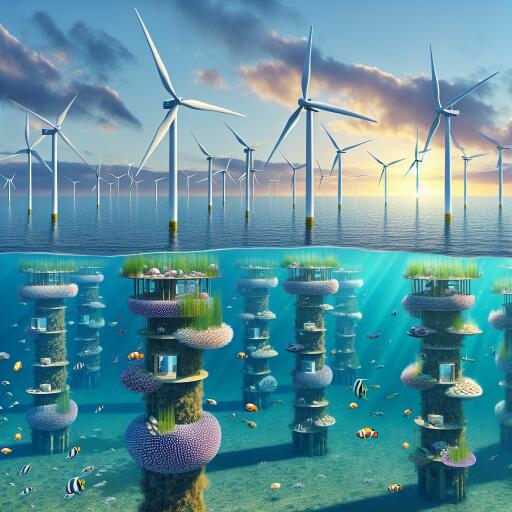
Report recommends ‘nature-inclusive design’ for Scottish offshore wind projects
In a forward-thinking initiative aimed at harmonizing renewable energy goals with environmental stewardship, a pioneering project in Scotland is paving the way for offshore wind projects to incorporate ‘nature-inclusive’ designs. This innovative approach seeks to mitigate the ecological impact of wind farms in maritime environments and to bolster biodiversity. The initiative, named the Collaboration for Environmental Mitigation & Nature Inclusive Design (CEMNID), is a conjoint effort between the Scottish offshore wind industry and regulatory bodies, signifying a critical step towards sustainable development in the sector.
The project has introduced a series of tools, including a Good Practice Mitigation Library and an assessment of the feasibility of various Nature Inclusive Design strategies. These resources are designed to guide the offshore wind industry in embedding ecological considerations into the very fabric of project planning and execution. By creating structures that cater to the needs of marine life, such as offering sites for shelter, feeding, and spawning, these measures aspire to enhance marine biodiversity amidst the accelerated expansion of wind farms across Scottish waters.
The unveiling of these tools coincides with National Marine Week 2024, reflecting a committed response to the pressing environmental challenges—the climate crisis and diminishing biodiversity—in Scotland’s marine territories. It outlines a strategic approach to streamline the consenting process for offshore wind projects, which has traditionally been hindered by environmental concerns.
Key recommendations from the report include a deeper exploration and trial of promising nature-inclusive interventions. Wind developers are encouraged to integrate these considerations early in the design phase of projects. Proposed measures range from ‘fish hotels’ and adaptable rock protections to reef-type structures and enhanced cable protection solutions. These initiatives are backed by existing mitigation strategies, such as turbine layout adjustments and increased clearance between wind turbine blades and the ocean surface, which have shown to be effective in minimizing impacts on seabird populations.
Attention is also drawn to the selection of infrastructure lighting and cable laying techniques, with an emphasis on minimizing disruption to marine ecosystems. This holistic approach demonstrates a mature understanding of the multifaceted impacts of offshore wind development and presents a comprehensive toolkit for mitigating potential negative effects.
The culmination of this collaborative effort is a set of actionable recommendations that serve as a blueprint for integrating nature-inclusive designs into Scotland’s offshore wind policy and planning. By adopting these strategies, members of the Scottish Offshore Wind Energy Council (SOWEC) are now equipped to navigate the complexities of environmental considerations more effectively.
Industry and regulatory leaders have expressed their support for the project’s outcomes. Notably, representatives from ScottishPower Renewables and Nature Scot have highlighted the project’s potential to reconcile the urgent need for renewable energy expansion with the imperative to protect and enhance our natural world. This sentiment underscores the significance of collaborative endeavors in overcoming environmental challenges and propels Scotland towards a future where sustainable development and ecological conservation go hand in hand.
As Scotland forges ahead in its clean energy transition, the CEMNID project stands as a testament to the power of innovation, collaboration, and environmental stewardship. It marks a critical step towards realizing the vision of a sustainable, nature-inclusive offshore wind industry capable of leading the fight against climate change while nurturing the biodiversity of Scotland’s seas.





Leave a Reply